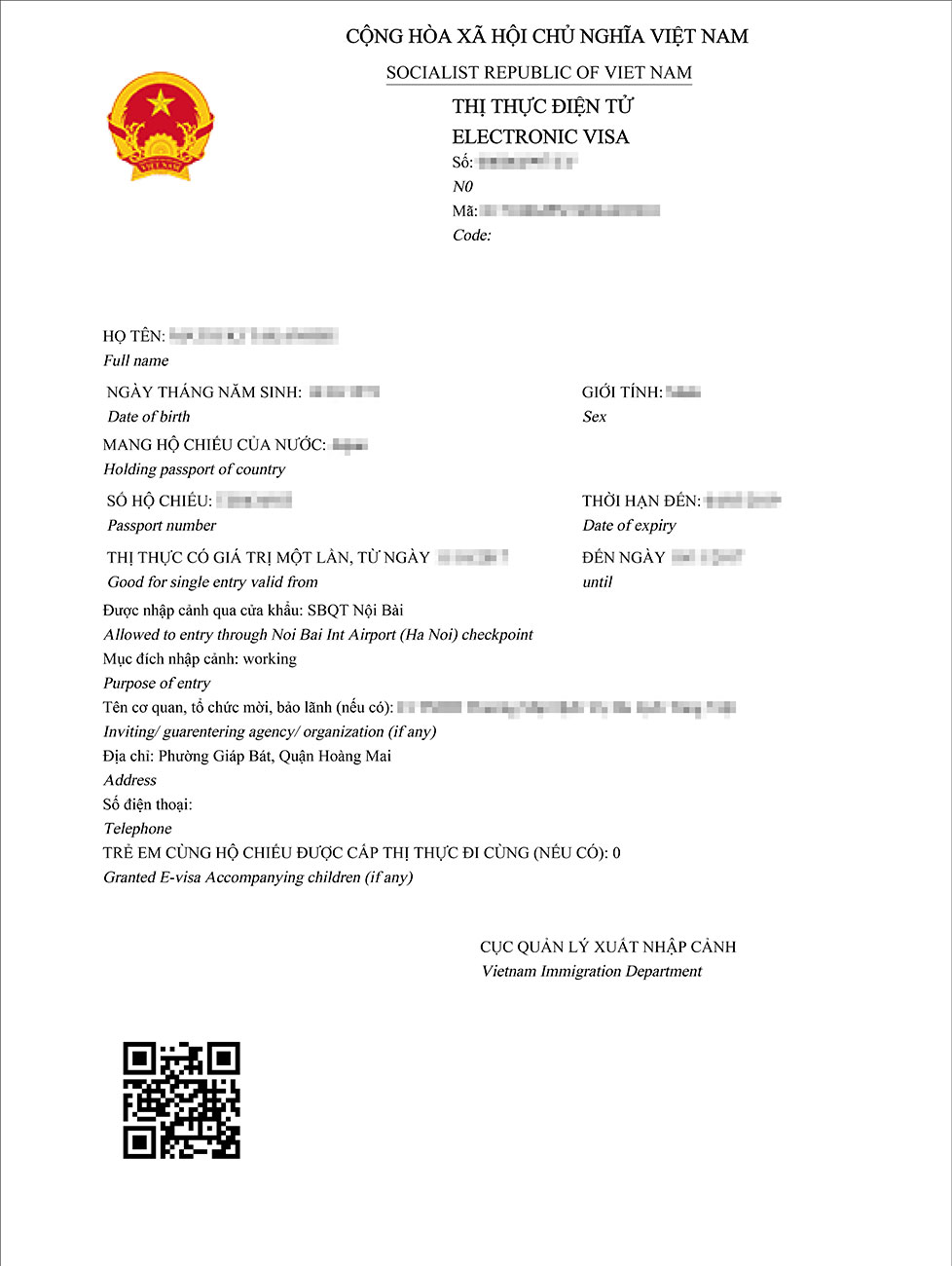December 25, 2017
e-Visa Vietnam
E-Visa of Vietnam Explained
Many countries now use electronic documents to facilitate access and make delivery quick and seamless and Vietnam is no exception. The E-Visa of Vietnam is such a document issued by the embassies of Vietnam for travelers who wish to visit this beautiful country. Applying for an E-Visa can be done online, thus avoiding a trip to and delays at embassies.
This official electronic document is issued online by the Immigration Department of Vietnam. With such a document, travelers can enter into and travel throughout Vietnam for a full 30 days, using just a single entry.
Eligible countries
Citizens from the following countries may apply for Vietnam’s E-Visa program:
Ports of entry
Travelers with an E-visa are allowed to enter and leave Vietnam through any of the many checkpoints. See the list of 28 international checkpoints below:
International airports
- Noi Bai international airport in Hanoi city
- Tan Son Nhat international airport in Ho Chi Minh city
- Cam Ranh international airport in Nha Trang city
- Da Nang international airport in Da Nang city
- Cat Bi international airport in Hai Phong city
- Can Tho international airport in Can Tho city
- Phu Quoc international airport in Phu Quoc island
- Phu Bai international airport in Hue city
Border land-crossing
- Mong Cai border gate in Quang Ninh Province (border with China)
- Friendship or Huu Nghi border gate in Lang Son province (border with China)
- Lao Cai border gate in Lao Cai province (border with China)
- Nam Can border gate in Nghe An province (border with Laos)
- Cau Treo border gate in Ha Tinh province (border with Laos)
- Cha Lo border gate in Quang Binh province (border with Laos)
- Lao Bao border gate in Quang Binh province (border with Laos)
- Bo Y border gate in Kon Tum province (border with Cambodia & Laos)
- Moc Bai border gate in Tay Ninh province (border with Cambodia)
- Xa Mat border gate in Tay Ninh province (border with Cambodia)
- Tinh Bien border gate in An Giang province (border with Cambodia)
- Song Tien border gate in Tien Giang province (border with Cambodia)
- Ha Tien border gate in Kien Giang province (border with Cambodia)
Sea Ports
- Hon Gai port in Quang Ninh province
- Hai Phong port in Hai Phong provice
- Nha Trang port in Nha Trang city (Khanh Hoa provice)
- Da Nang port in Da Nang city
- Quy Nhon port in Quy Nhon city (Binh Dinh province)
- Vung Tau port in Vung Tau city (Ba Ria Vung Tau province)
- Ho Chi Minh port in Ho Chi Minh city
What You Need To Apply For An E-Visa:
- All e-visa applicants must live outside Vietnam.
- Hold a valid passport which must be valid at least six (6) months after arrival to Vietnam.
- And have an email address for communicating & receiving their e-visa.
- A copy of your passport and a digital photo are required to complete the online form. Learn more
- We respect your privacy and image rights.
- We do not give away or sell your photo & passport copy to anyone.
- We never use your images & passport copy in advertising or any other marketing activity.
Identifying The E-Visa Of Vietnam
Please see sample below.

A sample of the eVisa of Vietnam
Benefits Of Choosing An E-Visa
- The Immigration Department of Vietnam offers travelers the convenience of getting a simple but official electronic document that can be applied for directly online, simplifying the procedures needed for entering Vietnam.
- Unlike “visa on arrival”, the E-visa does not require any application for an “approval letter” and of course, you do not need to stop at the “landing visa” desk to pick up the visa upon your arrival.
- The e-visa of Vietnam can be used to enter Vietnam via airports, land ports and seaports, whereas the Visa on Arrival is only for those using the international airports. The E-Visa can be used for travel to Vietnam by road, airplane or cruise ship.
